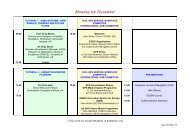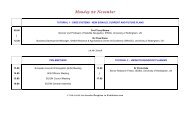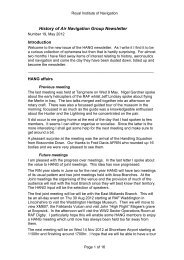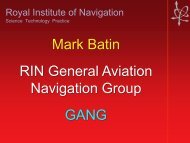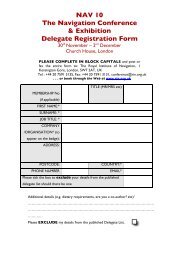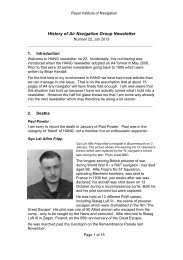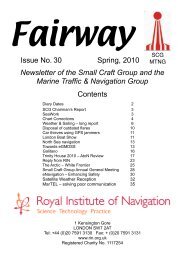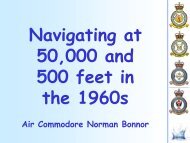VFR Guide - Royal Institute of Navigation
VFR Guide - Royal Institute of Navigation
VFR Guide - Royal Institute of Navigation
Create successful ePaper yourself
Turn your PDF publications into a flip-book with our unique Google optimized e-Paper software.
3. Preliminary aircraft preparation<br />
a. Check the aircraft is serviceable, and no scheduled maintenance is due while you<br />
may be flying. Check the insurance documents, the certificate <strong>of</strong> airworthiness and all<br />
other certificates you may need to take with you if travelling overseas.<br />
b. Arrange for any necessary survival equipment to be available.<br />
c. If landing away, arrange for chocks and tiedown equipment to be available to take<br />
with you.<br />
d. Make weight and balance calculations using a full fuel load and any survival and tiedown<br />
equipment. If too heavy, use your estimate <strong>of</strong> the fuel required and the actual<br />
weight <strong>of</strong> your passengers and intended baggage (don‟t take any more!) to carry out the<br />
calculations. If still too heavy, either carry fewer passengers or less fuel and plan to pick<br />
up more along the route. If anything changes you must re-calculate just before take-<strong>of</strong>f.<br />
e. Ensure you are familiar with the Flight Manual performance calculations, and that<br />
the Manual will be available before take-<strong>of</strong>f.<br />
f. Charge the batteries (or carry spares) for any electronic devices you intend to refer<br />
to.<br />
g. Arrange to have no more than the fuel you used for your calculations in the aircraft<br />
when you plan to fly.<br />
4. Route adjustment<br />
Just before the final navigation calculations, no earlier than the evening before the flight:<br />
a. Obtain the latest navigation warnings and check that nothing affects your planned<br />
route. Replan if necessary.<br />
b. Prepare the flight plan form if necessary (leaving UK airspace, flying IFR in<br />
controlled airspace) or desired. You are strongly advised to submit a flight plan if planning<br />
to fly over sparsely populated areas or the sea. Complete the route details and search<br />
and rescue fields, leaving the times empty until your final planning is complete.<br />
c. Ensure you have aerodrome charts (and approach charts if appropriate) for your<br />
destination and possible diversions. Plan your arrival to all likely runways.<br />
www.rin.org.uk 4 Mar 2012




